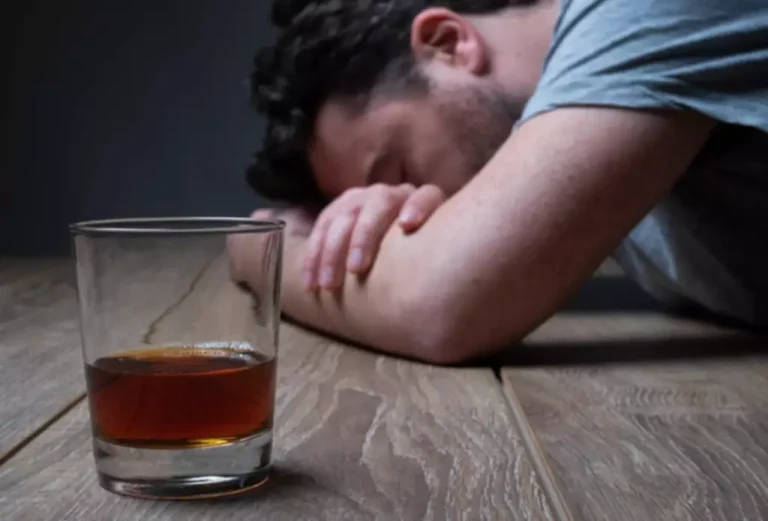
If not medically managed, some of the symptoms of benzodiazepine withdrawal may be severe and potentially dangerous. To successfully detox from benzodiazepines, one of the key https://ecosoberhouse.com/ factors is to be aware of exactly what to expect during withdrawal. Central nervous system (CNS) stimulants like cocaine and amphetamine can also produce withdrawal symptoms.
Treatment / Management

While they can quickly relieve symptoms of anxiety and panic, these drugs pose a high risk of dependence. In other words, your body may rely on benzodiazepines to function if you take them frequently and for more than a short period of time. The term ‘protracted withdrawal’ does describe the time sequence of symptoms after stopping serotonin based antidepressants, but is a poor choice of language when discussing this with your doctor. Withdrawal is considered something that goes away within days or weeks of stopping a drug. If you are going to talk to your doctor about these sorts of problems, then it is best to describe the problem as symptoms that happened after stopping the drugs [emphasis added]. I realize that many physicians will declare these new symptoms the start of a new mental illness – usually bipolar – but calling it protracted withdrawal just confuses the doctor.
Ketamine: A Potential Adjunct for Severe Benzodiazepine Withdrawal
- The patient had a profound response to ketamine both subjectively and objectively by improvement of his tremor and agitation as well as resolution of tachycardia and hypertension.
- Since this was a survey, we were unable to determine whether respondents met criteria for a formal psychiatric disorder that contains the symptoms.
- The medication Romazicon (flumazenil) is sometimes used off-label for withdrawal symptoms.
Benzodiazepines are among the most commonly prescribed medications in the United States. Several types of benzodiazepines are sold under popular brand names like Valium (diazepam), Xanax (alprazolam), and Klonopin (clonazepam). Benzodiazepine withdrawal can be an unpleasant and challenging aspect of early recovery.
18 Withdrawal Treatment: Outcomes
Since benzodiazepines are among the most frequently prescribed drugs in the United States, treatments for BIND represent an urgent unmet medical need [25]. The term benzodiazepine-induced neurological dysfunction and its acronym BIND was coined as an effort by a separately convened work group of experts to provide a name for this condition that may serve both clinicians and the patients who suffer from this condition. BIND serves as a clinically serviceable name for the enduring neurological sequelae of benzodiazepine use and would reify this condition for healthcare professionals. Patients in our survey sometimes wrote in comments that they felt like healthcare professionals did not take them seriously or frankly challenged or disbelieved their long-lasting symptoms [9]. Recognizing this condition with a specific medically accepted term may encourage more professional compassion, better treatment, and future research.

Signs and Symptoms of Benzodiazepine Withdrawal
This study represents a secondary analysis of the results from an internet survey published previously [9]. It was approved by the Vanderbilt University Institutional Review Board (IRB) #20052, and did not require written informed consent because it was conducted as an anonymous survey that began with a question which recorded each respondent’s consent for participation. You may have to pause, slow down, or speed up depending on how your body reacts to withdrawal. A slow taper would involve reducing your dose by 1 mg (5%) every 4 weeks.
- Medical management of life-threatening withdrawal is typically undertaken with either benzodiazepine loading and gradual taper or symptom-triggered treatment, though adjuvant anxiolytics and anticonvulsants are often used [3,4].
- Sometimes, however, some people remain in severe withdrawal that persists, without windows, as the “baseline” condition” for quite some time, even years in some cases, until the “baseline” begins to improve.
- They can range in severity, though for some people, they remain mild and manageable.
- A total of 1,207 respondents finished the survey although not all respondents gave an answer to every question and some questions allowed for multiple answers.
- The most common reasons for prescriptions were situational anxiety (43.7%), insomnia (40.3%), panic attacks (39.9%), depression (33.0%), and generalized anxiety disorder (23.7%).
- If you go into withdrawal without tapering, you also risk experiencing delirium and hallucinations that cause you to lose touch with reality—a terrifying and dangerous experience.
The authors gratefully acknowledge the work of Dr. Jane Macoubrie who was instrumental in creating the original survey, envisioning this publication, and supporting efforts at all levels to better explore the nature of these symptoms. The authors extend heartfelt thanks to all of the respondents who shared their experiences in the survey. Totals represent the number of respondents who answered this question in the affirmative and the percentages indicate the proportion of the specific population who reported those consequences.
The chart below lists some other possible causes of protracted benzodiazepine withdrawal symptoms:

As a result, patients often describe being told things like, “those drugs are long out of your system” or “those drugs don’t cause that, it must be something else,” when in fact they are suffering from protracted withdrawal from benzodiazepine cessation. It is estimated that percent of people who took benzodiazepines long-term (past the 2-4 week prescribing severe benzodiazepine withdrawal syndrome guidelines) will experience protracted withdrawal [1] or a “post-withdrawal syndrome” [2]. If we had a true account of how many people (millions) worldwide were taking benzodiazepines long-term, 10-15% of those would, no doubt, extrapolate to an enormous number of individuals at risk for protracted illness from benzodiazepine withdrawal.
If you stop or reduce your dose suddenly, you will experience withdrawal symptoms. The primary difference between these drugs is the length of time they stay active in the body. However, benzodiazepines can cause physical dependence and withdrawal even when they are taken as directed. Sedative-hypnotic withdrawal is treated with substituting drugs that have a long duration of action, benzodiazepine or phenobarbital for a few days, followed by a decreasing dose over 2 to 3 weeks. Other therapies, including counseling and cognitive behavioral therapy (CBT), may be helpful for people looking to manage symptoms without relying on other drugs. People who have been through acute withdrawal often say that this phase is the most difficult.


It’s incredibly important to follow your doctor’s guidance when you stop taking benzodiazepines. If you stop taking them “cold turkey,” or all at once, you may experience severe, even life threatening, withdrawal symptoms. The onset of benzodiazepine withdrawal depends on the specific medication you are taking. Short-acting drugs like Xanax (alprazolam) and Ativan (lorazepam) leave the system quicker, which means withdrawal symptoms can appear in as little as eight to 12 hours.
Protracted Withdrawal Syndrome (PWS)
Aside from the severity of symptoms tending to fluctuate, people report a wide range of experiences. A particularly severe or troublesome cluster of symptoms may predominate for a time, and then change to another cluster. Many people become disbaled during this time, unable to maintain work or other functioning, sometimes for years.
